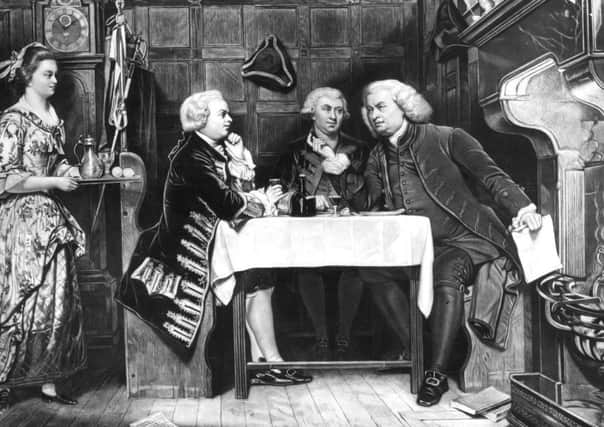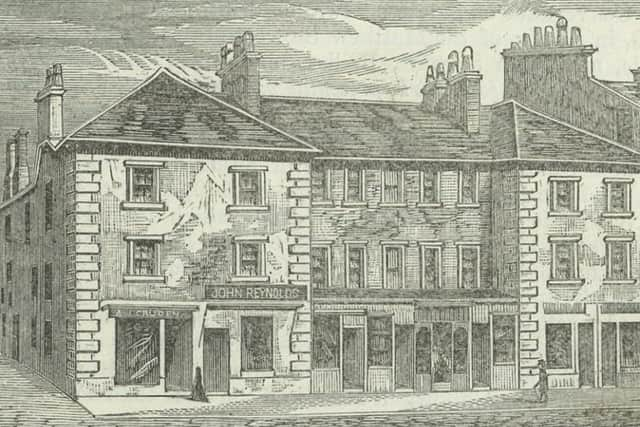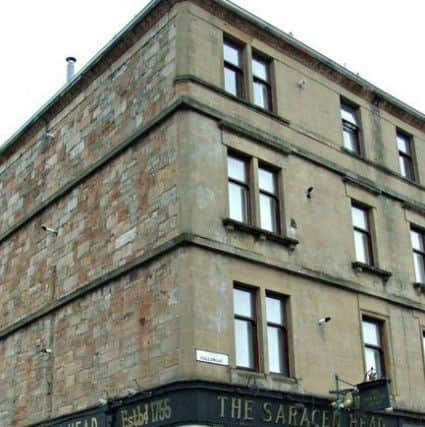The elite history of Glasgow pub The Saracen Head


During the 18th Century, it enjoyed a reputation as a “resort of the elite of Glasgow” and the stop off for the aristocratic traveller.
The original tavern on the Gallowgate was built in 1755 opposite the current pub - known as the Sarry Heid - and boasted 36 rooms and stabling for 60 horses.
Advertisement
Hide AdAdvertisement
Hide AdThen, it was the preferred watering hole for judges, nobles and a number of influential writers who were drawn to the inn for mutton and “oceans of claret”, the formal dinners thrown at the tavern noted recalled as being very fancy affairs.


Waiters were “resplendent in embroidered coats, red plush breeches, white stockings and powdered hair,” according to one account in F. Marian McNeill’s The Scots Cellar.
It added: “A prominent feature on such occasions was the famous punch bowl of blue and white china, decorated with the tress, the bell and the fish of the city’s coat of arms, together with a rolicking procession of liquor.”


The bowl held no less than five gallons of drink, with the vessel now held by Glasgow Museums.
Advertisement
Hide AdAdvertisement
Hide AdThose attending a cock fight at the pit in the Gallowgate, earlier known as Gallow’s Gate, would also use the tavern, then known as the Saracen’s Head Inn.
Among them was the Duke of Hamilton who would “gather with his cockfighting cronies at the Saracen’s Head and celebrate his gains or drown his losses, in reaming rummers of Jamaican punch,” according to C Stewart Black’s Glasgow Story.
The pub has attracted a long line or writers, including Robert Burns who stayed at the inn during one of his visits to Glasgow between 1787 and 1791.


Printer William Reid, of Brash and Reid, was one of the friends made at the tavern by the poet.
Advertisement
Hide AdAdvertisement
Hide AdIt is reputed that Burns first offered his poems to Brash and Reid, but Reid refused to publish such frivolities.
Boswell and Johnson rested up at the inn following their tour of The Hebrides in October 1773.
Dr Johnson was in “high glee” after arriving and particularly appreciated the coal fire.


Boswell wrote of their night at the Saracen Head: “On our arrival accounts from home, and Dr Johnson, who had not received a single letter since we left Aberdeen, found here a great many, the perusal of which entertained him much.
Advertisement
Hide AdAdvertisement
Hide Ad“He enjoyed in imagination the comforts which we could now command, and seemed to be in high glee.
“I remember he put a leg up on each side of the grate, and said, which a mock solemnity, by way of soliloquy, but bud enough for one to hear it; there am I, an Englishman, sitting by a coal fire.”
Several figures from the university, then in the nearby High Street, joined them the following morning for breakfast before the pair departed for Ayrshire.
It has also been claimed economist and philosopher Adam Smith joined Dr Johnson at the Saracen’s Head Inn for a drink but that their meeting ended in a swearing match.
Advertisement
Hide AdAdvertisement
Hide AdThe poet William Wordsworth and his sister Dorothy arrived, along with Samuel Coleridge, as part of their tour of Scotland in 1803.
One account said: “The hackney coach in which they arrived was the first ever seen in the city and when they left to travel west-wards a crowd of small boys followed the coach cheering and shouting, for several miles.”
Te original Saracen’s Head Inn was built in 1755 by Robert Tennent, gardener and owner of the White Hart Hotel, on the graveyard of Little St Mungo’s
Much of the stone he required to build his hotel was recovered from the ruins of the Bishop’s Castle in Townhead and from the walls of the old Gallowgate Port, the city’s east gate, which was demolished to make way for the inn.
Advertisement
Hide AdAdvertisement
Hide AdTennent died bankrupt two years after the opening of the hotel and it was managed first by his widow Katherine, then by James Graham, following her death.
Jean Graham took it over following the loss of her husband in 1777 but the popularity of the inn started to wane as new hotels opened up in the city.
In 1792 it was acquired by William Miller of Slatefield and converted into shops and apartments. It was finally demolished in 1905.
